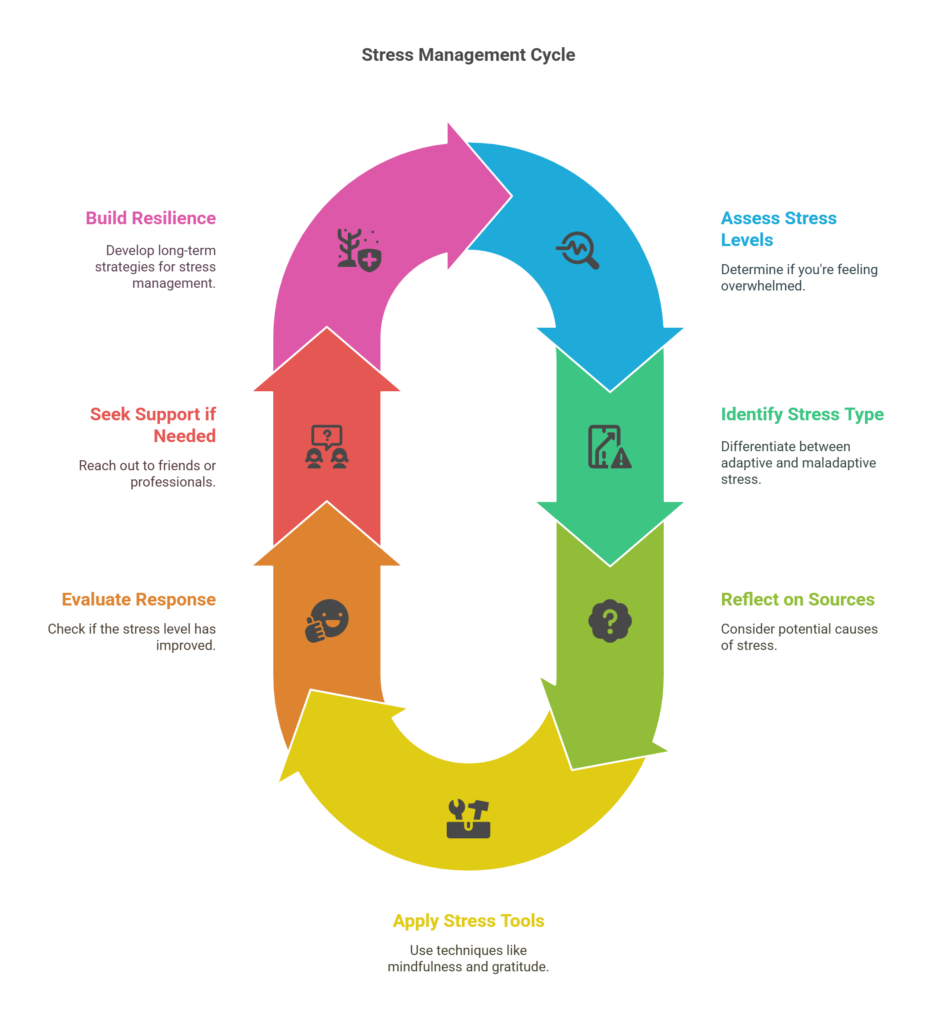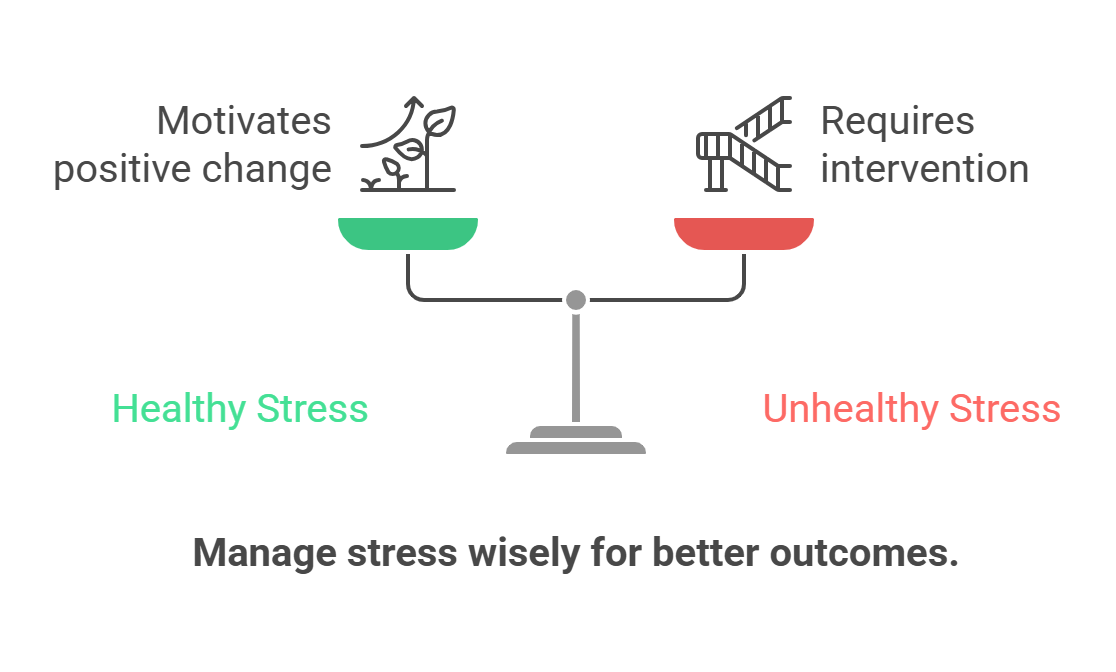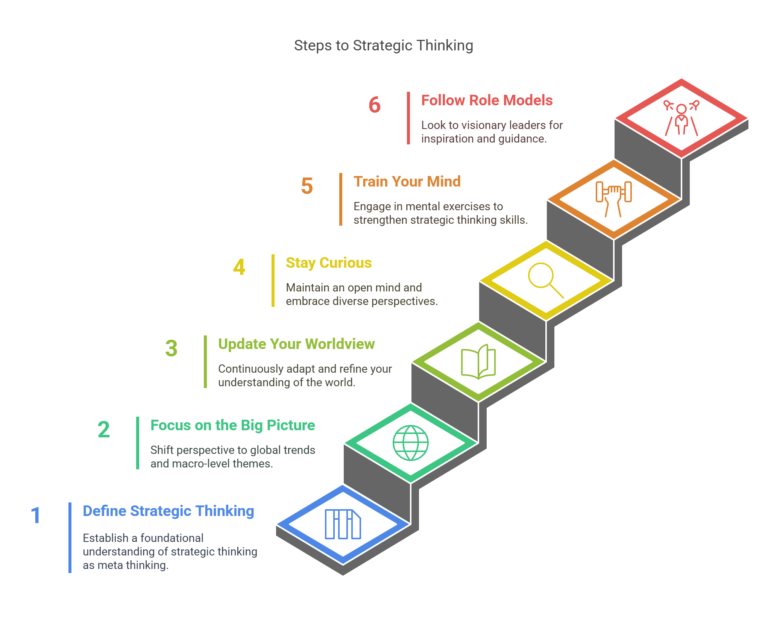Stress is a lot like gravity — invisible, ever-present, and inescapable. It’s not just something we deal with; it’s something that lives all around us, woven into the fabric of our daily lives. But even though everyone experiences it, many of us feel uncomfortable talking about it.
We live in a world where vulnerability is often mistaken for weakness. Society tells us to power through, be strong, and stay “resilient.” As a result, many people hide their struggles, thinking they’re alone. But here’s the truth: you are not alone, and stress is not your fault.
What Is Stress, Really?
Stress isn’t inherently bad. In fact, some stress is healthy — it’s what motivates us to take action, meet deadlines, and grow. Scientists call this adaptive stress. Think about starting a new job, preparing for an exciting event, or falling in love. That kind of stress pushes us forward.
But when stress becomes overwhelming or chronic — when it no longer serves us — it turns into maladaptive stress. That’s the kind that wears us down, makes us feel anxious or burned out, and leaves us emotionally drained.
The Biology of Stress: What’s Going On in Your Brain?
Your brain plays a big role in how you process stress. Under normal conditions, your prefrontal cortex — the part responsible for planning, decision-making, and memory — is in control. But when you’re stressed, another area takes over: the amygdala, which governs your survival instincts, like the fight-or-flight response.
Back in the days when humans had to fight off wild animals, this made sense. But today’s “tigers” are different: bills, work pressures, relationships, and parenting challenges. These stressors are constant, and they keep your amygdala on high alert, humming in the background all the time.
This is why stress can make you feel on edge, stuck in negative thinking, or like your inner critic is speaking through a megaphone.
The Myth of Resilience
Many of us believe that strong, resilient people don’t feel stress or burn out. We’re taught that “pressure makes diamonds,” and we repeat it to ourselves during tough times. But here’s the truth: even diamonds can crack.
Real resilience isn’t about powering through. It’s about recognizing your limits, setting boundaries, and treating yourself with compassion. It’s about saying no when you need to, and acknowledging that needing help doesn’t mean you’re weak — it means you’re human.
You Can Rewire Your Brain
If you’ve experienced childhood adversity, trauma, or chronic stress, your stress response might be more sensitive. But the good news is: you are not stuck with the brain you were born with.
Thanks to something called neuroplasticity, your brain is capable of growth and change throughout your life. That means you can train your brain to respond differently to stress — not by overhauling your entire life, but through small, meaningful actions.
Two Simple Ways to Reset Stress
Let’s start with two powerful (and practical) strategies to help you manage stress in your daily life:
1. Stop. Breathe. Be.
This quick, three-second exercise helps bring you back to the present moment — the what is, rather than the what if.
- Stop whatever you’re doing.
- Breathe in deeply, then out.
- Be — ground yourself in the here and now.
This short pause helps interrupt anxious, future-focused thinking and resets your stress response.
2. Practice Gratitude
Gratitude is more than just being thankful — it’s a scientifically proven way to shift your mindset. Try this:
- Write down five things you’re grateful for, and why they matter.
- Do this regularly — after 30, 60, or 90 days, you’ll notice real benefits to your mood, stress levels, and overall resilience.
Gratitude activates a process called cognitive reframing — it shifts your focus from scarcity to abundance, from fear to hope. And as the saying goes, what you focus on, grows.
Stress Is a Skill You Can Learn to Manage
Managing stress isn’t about being perfect. It’s not about having it all together. It’s about learning small, sustainable practices that help you cope better — even in the middle of a messy, overwhelming life.
Stress is not a personal failure. It’s a part of life. But with awareness, practice, and compassion, you can rewire your brain and body for less stress and more resilience.
Final Thought
You don’t have to wait for life to be calm before you find your calm. You can start now, just as you are.
So next time you feel the weight of the world pressing on your shoulders, remember to stop, breathe, and be. And know that there is strength in slowing down, in reaching out, and in taking care of your own heart.

How to Flag Stress and Overcome It: A Step-by-Step Guide
Step 1: Check In With Yourself
- Question: Do you feel overwhelmed, anxious, or unusually tired?
- No: You’re likely in balance. Keep up your healthy habits and carry on!
- Yes: Let’s dive deeper into what’s happening.
Step 2: Recognize the Signs of Stress
If you answered “Yes,” take a moment to notice these common stress signals:
- Racing thoughts that won’t quiet down
- Trouble falling or staying asleep
- Feeling emotionally drained or burned out
- Physical tension (e.g., tight shoulders, chest tightness)
- A loud, relentless inner critic
Step 3: Flag the Type of Stress
Not all stress is bad—let’s figure out what you’re dealing with:
- Healthy (Adaptive) Stress:
- Examples: Starting a new job, falling in love, or tackling meaningful deadlines
- Action: Use it as fuel to move forward. Monitor it, but no major intervention needed.
- Unhealthy (Maladaptive) Stress:
- Examples: Chronic overwhelm, exhaustion, or constant worry
- Action: This needs attention—let’s address it.
Step 4: Reflect on the Source
Pinpoint where the stress might be coming from:
- Is it your workload?
- Personal relationships?
- Health concerns?
- Past experiences (e.g., childhood or adverse events)?
Understanding the root helps you target your response.
Step 5: Apply Stress Reset Tools
Try these practical techniques to hit the reset button:
- Stop. Breathe. Be.
- Pause what you’re doing.
- Take a slow, deep breath in and out.
- Ground yourself in the present moment.
- Practice Gratitude
- Jot down 5 things you’re grateful for and why they matter.
- Shift your mindset by focusing on the positive.
Step 6: Evaluate Your Response
After trying the tools, ask yourself: Do you feel slightly better?
- Yes: Great! Repeat these steps regularly to build resilience.
- No: Reach out—talk to a trusted friend, therapist, or physician. You’re not alone, and it’s not your fault.
Step 7: Build Long-Term Resilience
Stress management is a marathon, not a sprint. Strengthen yourself with these habits:
- Learn to say “No” when needed.
- Set clear boundaries with work and people.
- Prioritize sleep, mindful eating, and regular movement.
- Treat yourself with self-compassion—be kind to yourself.
- Remember: Resilience isn’t just enduring; it’s resting, too.





